I like using gear that has been issued by the United States Military. Talk about field tested!
But sometimes the issue gear doesn’t work quite as well as it could in some instances and situations. Here is a look at a combat boot that might be a good choice for servicemembers and civilians for hot weather situations.
by Leon Pantenburg
Disclaimer: Danner provided the product for this review. I don’t work for Danner, and was not paid to write this review. Nobody had any input into it, and at the time of publication, there was no sponsorship relationship between Danner and Survivalcommonsense.com. This review is my opinion, and all I ever promise in any such equipment review is a fair shake.
I was standing (socially distanced) in the paint line at Lowe’s in Brandon, Mississippi behind a pleasant-looking airman in full field uniform. As is my wont, I started a conversation. My post on moisture barrier liners in boots was done, and I wondered what the military issued for boots to wear in the Mississippi heat and humidity. The airman was wearing his issue Altama Spec ICI-17-D-1082 boots.
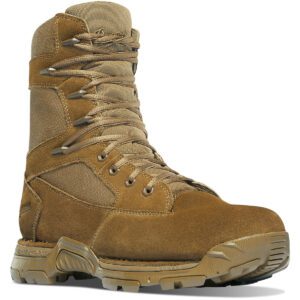
Danner Incursion 8-inch Coyote Hot military boot
“So how do you like them?” I asked, and that unleashed a torrent of feedback.
In short: Not much. Not much at all. The boots are hot and uncomfortable, he said, with a moisture barrier liner. The liner theoretically seals out moisture while letting internally-generated moisture out. But sometimes the liners don’t work like they’re supposed to. The airman said his feet stay hot, soggy, soft and vulnerable to blisters.
“My feet stay sweaty all day. And I work in an office!” he commented. “Sometimes, by the end of the day if I’ve walked somewhere, I can wring the sweat out of my socks.”
There is issued equipment, and there is optional gear that can be privately purchased and that can replace the issued gear. But not just any boot will do. The footwear has to meet AR 670-1 regulations (See boot regulations below) and be approved by the commander.
One option for hot weather boots could be the Danner Incursion 8-inch Coyote Hot. I had great luck with the Danner Fullbore Coyote Hot last summer in the Oregon deserts, and wondered if the Incursion would be equally useful. Danner sent me a pair to wring out.
Danner Incursion Coyote Hot Specifications
| Style | 50531 |
|---|---|
| Weight | 50 oz per pair |
| Height | 8″ |
| Insulation | Non-Insulated |
| Color | Coyote |
| Footbed | Polyurethane |
| Shank | Bi Fit Board |
| Last Type | 851 |
| Lining | Non-Waterproof |
| Liner | Air Mesh |
| Outsole | Vibram® Striker Bolt |
| Recraftable | No |
| Manufacturing | Imported |
| Certification | AR-670-1 requirements for optional wear |
The Incursions have some common characteristics with the Vietnam-era jungle boots. I’ve been a jungle-style boot fan since I started hiking in them in the early ’70s in Iowa. At the time the surplus stores were awash in Vietnam-era military gear and I could afford jungle boots. They were perfect for summer hiking, laboring in the fields or working construction. They featured a canvas upper, and had vents on the side so they would drain easily and dry quickly.
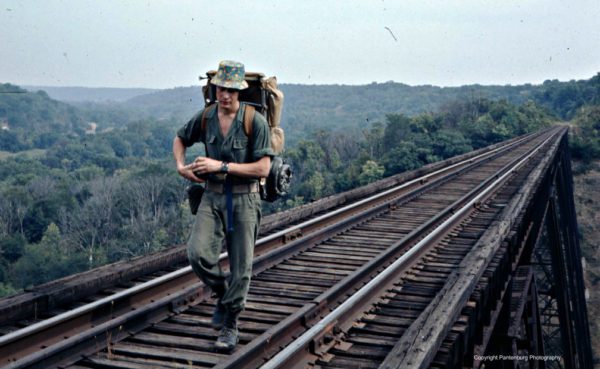
This 1971 photo was taken on my first backpacking trip in Iowa in August 1971. Most of my gear was military surplus, including the jungle boots.
Years later, I was a newspaper reporter working for the Vicksburg (Mississippi) Evening Post. On any given day, a reporter can go from covering a flood or fire, to covering the 4-H fair, to attending a church social or Chamber of Commerce meeting. My shoes had to fit in, and the jungle boots worked well with khakis or dress slacks. I kept them polished, and the boots didn’t attract undue notice. Best of all, they were comfortable in the stifling August heat.
The good stuff
I got the Incursions in time for my nightly dog walk. Depending on the energy level of my Lab, my level of laziness and the weather, we typically walk between two and four miles every evening. I laced the boots on over some socks and walked four miles around a track. The temperatures were in the lower 60s, and I hiked at my usual four-mph pace.
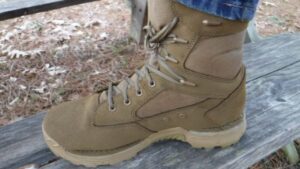
The Incursions were very comfortable, even soaking wet in cool temperatures.
The boots were comfortable from the first step and there were no hot spots or rubbing. I continued wearing the Incursions every night in weather ranging from 70 degrees to the single digits. The boots were always comfortable. (A lot of boot comfort depends on your socks!)
Fit: My experience is that the fit of Danner shoes and boots is very accurate. My EE feet fit very comfortably in the wide-sized boots. I normally wear a 10 to 10-1/2 in normal wear shoes. I got the Incursions in 11 wide, and they fit perfectly. Everyone’s feet will swell some when walking, so I always get a half-size larger hiking boot. The best bet is to try on boots in the late afternoon, when your feet have naturally expanded.
The heel section grips my heels very well. Once the boots are broken in, there is no lateral or vertical movement. This is a huge help for avoiding blisters.
Break in time: This is an aspect that is frequently ignored. But any boot that is hard to break-in could end up being a problem. As a minimum, I figure that it takes about 20-30 miles of urban walking to get started on the break-in process. My experience with Danners is that they vary in break in time. My 400 gram insulated Pronghorns took a long time to become comfortable. The Fullbore Coyote Hot 4-1/2-inch boots took less time, and the 2650s didn’t take much time at all. (Danner did not supply this footwear.)
Comfort: The proper size will make a world of difference in how comfortable your boots will be. Many people get boots that are too small for them – they get the same size as their shoes that will only be worn in urban settings. For an infantryman who will be carrying a heavy load a wider, longer boot is a necessity. Also, factor in socks. I wear wool socks year-round, and I like the bulky ones. You need to be able to wiggle your toes easily when the boots are on, laced firmly, with the socks that will be worn with them.
There are a lot of factors that determine how comfortable your hiking footwear will be. Consider these things when you are shopping:
- Shoes or boots for hiking?
- Waterproof or not?
- What are the best socks for the conditions?
- How do you avoid getting sore feet?
- Will the shoes or boots keep your feet warm?
Lining: Incursions feature breathable, moisture-wicking air mesh lining and ventilation technology for comfort in hot weather. Haven’t hit the real summer heat in the Deep South yet, but if the Incursions works as well as the Fullbore Coyotes, I look forward to good things.
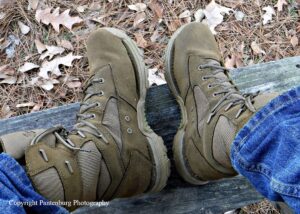
An eight-inch high boot can solve a lot of hiking problems, such as debris getting kicked inside while walking.
Height: An eight-to ten-inch boot solves a lot of hiking issues. You typically don’t need gaiters on the trail, because the height keeps the trail debris from getting kicked inside. This will be particularly appreciated when I do my annual hike to South Sister in the Oregon Cascades. Toward the summit, the volcanic scree is like walking on bulky sand at a steep angle. Generally, I have to stop and empty out my boots. I anticipate these Incursions, with that extra height, will eliminate that need.
The boots can be laced tightly to provide better ankle support. Tuck your pants in them and the ticks can’t get in easily. Most snake bites occur on the foot or ankle, so the boot may provide some protection from bites.
Naturally, the extra height comes with extra weight. The Incursions weigh 50 ounces per pair, compared to the 4-1/2-inch Fullbore Coyote Hot at 42 ounces.
Sole: The Striker® Bolt outsole is slip-resistant and offers maximum surface contact while gripping on and off pavement. I’ve used this pattern in sand, on slippery oak leaves on mud, on rock and in volcanic scree. The tread grips very well but it doesn’t collect debris and clog up.
Side vents: These are great for getting moisture out of the boot. Walking creates an in-out movement of air. This dissipates the internal moisture and encourages some air movement. For a boot that will be worn in hot, humid situations, this is a definite asset.
On the second day of use, I soaked the boots in the bath tub, toweled them out, and walked four miles. Most of the moisture squished out, and the boots were well on the way to drying out at the end of the hike. My socks got a little soggy, but they were drying out. This is very valuable to an infantryman, who may not have time to stop and change socks. Try this same exercise with a moisture barrier liner boot, and your feet will never dry out.
There’s this: Many of the Danner footwear products are made in the United States, specifically, Oregon. I buy local whenever possible. These boots are made in Vietnam. I guess that is better than China, but I wish these boots were made here.

Order Danner Incursions here – free shipping!
Do you need a pair of Incursions? If you are a servicemember stationed in a hot climate, you definitely do. I found the Incursions to be comfortable in a wide range of temperatures. They did not make my feet sweaty, but they were still warm at temperatures in the low 30s. The boots dried out quickly and were comfortable on long walks.
For us civilians, these Incursions might be the desert hiking boot you’ve been looking for. They are, obviously, great hikers. The extra height can be very useful in sand, dust and dry desert conditions. If they get wet, the boots dry out quickly. They would be excellent boots for rocky and swampy trails. I like these boots very much and am glad I got a pair.
Please click here to check out and subscribe to the SurvivalCommonSense.com YouTube channel – thanks!
Formally titled “Wear and Appearance of Army Uniform and Insignia,” AR 670-1 is the go-to regulation for how to look in uniform, addressing everything from male and female hair length to hiding visible tattoos to how to hold an umbrella. It serves as the outline for general uniform wear, with reference to more detail regulations for particular items and their individual regulations.
“As an option, Soldiers may wear commercial boots of a design similar to that of the Army combat boot (tan), as authorized by the commander. The boots must be between 8 to 10 inches in height and made of tan flesh-side out cattlehide leather, with a plain toe and a soling system matching the color of the tan upper materials. Rubber and polyether polyurethane are the only outsole materials that are authorized. The soling materials will not exceed 2 inches in height, when measured from the bottom of the outsole, and will not extend up the back of the heel or boot or over the top of the toe. The exterior of the boot upper will not contain mesh but will be constructed of either all leather or a combination of leather and non-mesh fabric. Soldiers may wear optional boots in lieu of the Army combat boot (tan), as authorized by the commander; however, they do not replace issue boots as a mandatory possession item.”
Similar uniform specifications are required for Naval and Marine Corps personnel and the Air Force.

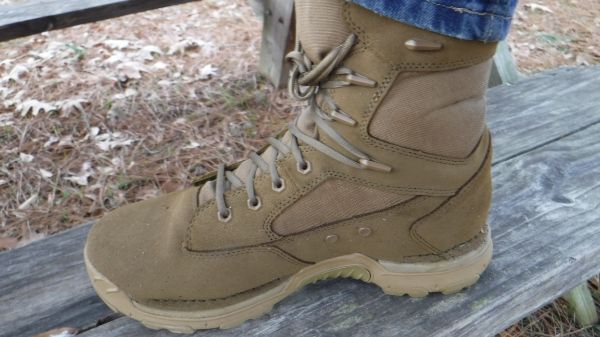


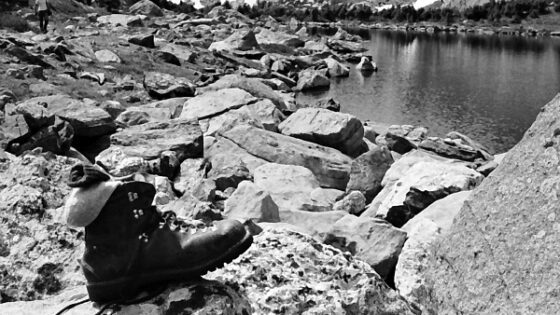
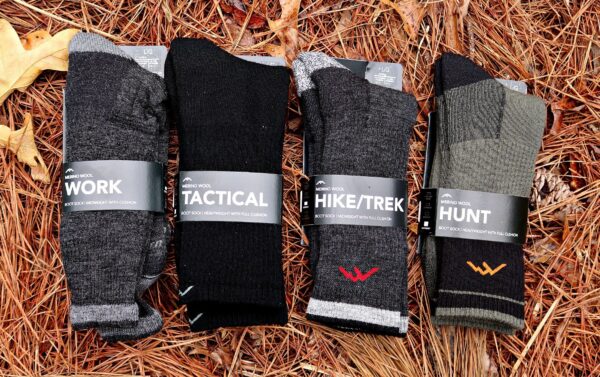
Leave a Reply